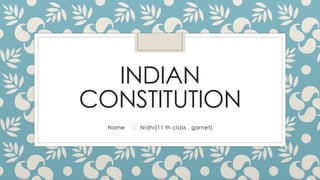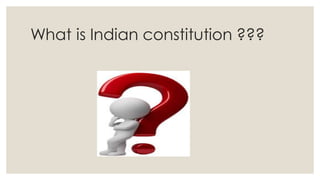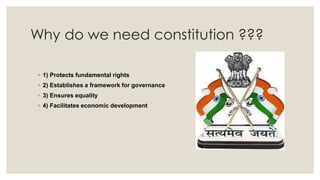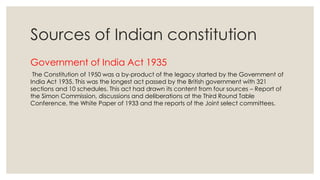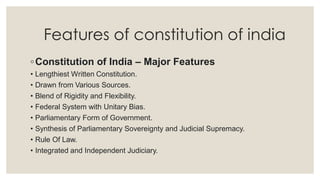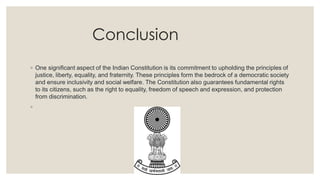The Indian Constitution is the longest and most detailed constitution in the world. It draws from various sources like the Government of India Act of 1935 and other countries' constitutions. The Constitution establishes India as a federal parliamentary democratic republic with a unitary bias. It guarantees fundamental rights to citizens and establishes the framework of government, emphasizing the balance of power between various branches.
